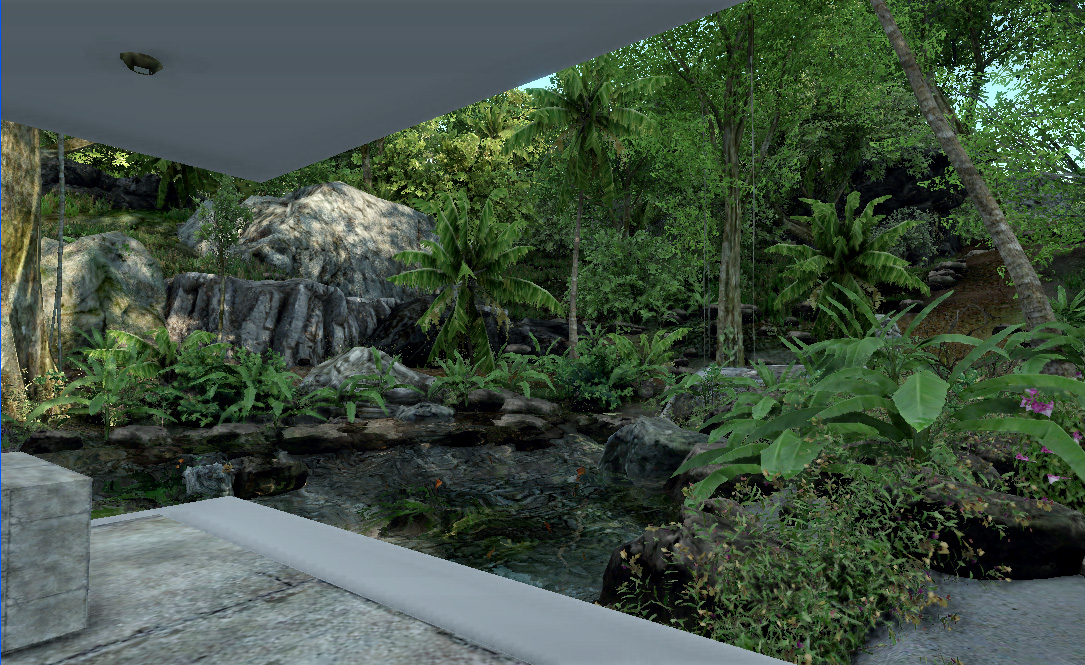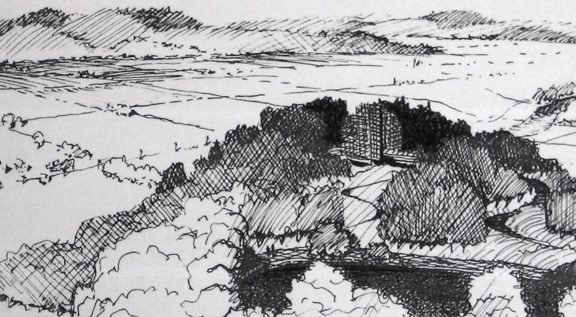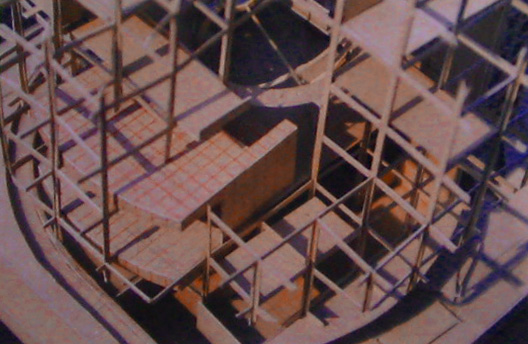To paint with words a concept for an idea house, designed to help forge an optimistic age of humanism.
Design Intentions:
It is the intention of this project to create an optimistic symbol for the future while manifesting the knowledge of humankind as we know it today.
While deconstructivism seems to be epitomizing a world which seems more and more chaotic (new nations, brutal senseless murders and civil ethnic wars), it is my hope that this project will stand as a symbol for constructivism, healthy growth and a bringing together of diversity as the natural way towards peace and happiness. Constructivism in the sense that the scaffold-like structure can is analogous to the American grid which stretches across our nation, inherently providing for growth and order. And, when extruded into three dimensions, the grid can, for this home, play a significant role in the shaping of domestic life and future growth.
Idealistically, the American street grid could be extruded to any height and hold within its framework, any shape imaginable, and still be perceived on the whole as ordered. In fact, the juxtaposition of contrasting elements to the Cartesian grid may aid our cognitive recognition capabilities because it is through contrast that one can find clarity of perception. In this project, the sphere (anchored by the bridge) is balanced in scale to the grid which in turn suspends the floating functional elements around the anchoring core.
It is my goal to provide a place where hierarchical frameworks acknowledge the relationships between an individual and peers… families… cities… regions… nations… continents, in an optimistic composition of harmony and peace. Only through a balanced architecture that embodies the spiritual emotions of human kind, can one make this a real possibility.
What it is:
This structure is the embodiment of the Principals of Architectural History and of Humankind as I see them. It embodiment is both open and breezy yet solid. While balancing its presence of place, like an object in the landscape, it yields to the transparency of the surrounding foliage, making it both an object and a blended part of nature. It is expandable, composed of smaller parts that can be easily handled on site by efforts of an ordinary worker, and therefore able to accommodate multiple generations. It is spacial and open yet enclosed and comforting, offering unexpected vistas within and through while feeling anchored and permanent. It has it’s earthly parts, and parts that are an outlook to the plains below and sky above. Open yet closed, constructed yet finished. It is a house that will feel part of the landscape and thus a place one would continue to enjoy being a part of for many generations.
It’s structure can be modified to suit different layouts with rooms that can be moved to new locations. It is both fixed yet modular and flexible; rectangular yet curvilinear.
At its core is the main stair, composed of solid masonry, it is the spine for circulation up to the top and acts as the anchoring core component of the design. What this house design is, is balanced. It is a representation of the core principals of architecture and human dwelling without the shackles of style. It embodies the human spirit, with a sense of place while expressing a sense of the future and unknown. It embodies the life cycle of a human, from birth to death and all the journeys we humans experience in our life. Its goal is to not reflect a personal style of a single individual during a single period of time, or embody the spirit of one particular phase of an architect, but again, it frees itself into a pure reflection of human spirit throughout time.
Site Description:
Overlooking the glacial rolling plains below, the site is perched on a rock outcropping peering through a mature deciduous forest at the tip of a ridge.
Cool summer breezes caress a small lake at the base of the ridge and is channeled up the hill through the open branches of the many oaks which dot the ridge, so to does the passage of its inhabitants. The house, rotated 10 degrees East of South, and situated in a temperate climate, pulls the Sun in and around it’s floating elements. Winter winds from the Northeast are deflected from the core of the house with both deciduous and conifer trees as well as with rock outcroppings.
The density of the canopy lightens near the top of the ridge as rock outcroppings push upward, giving the site a plateau-like quality. The houses’ precinct is further reinforced by a series of gridded cuts within the natural terrain, giving the structure place and permanence and thus mediating between man-made and nature-made. This precinct and its juxtaposition to the spherical shape of the grid has much in common with the Pantheon in Athens which is situated on its plateau, but here, the fabric which binds this edifice to its context above the plateau consists of branches and leaves as echoed by the open grid work of the structure. The spherical grid and its many ‘branches’ mediates the transition between earth and sky.
Referencing Leonardo da Vinci, Vitruvian Figure, one can make a link to humankind and our relationship to the square and circle. Redefining humanism for our new century with this familiar icon which links man to geometry, mathematics, science and the balanced order of the universe. Today we appreciate our place in the universe as being transitory, that Albert Einstein’s Theory of Relativity and his quest for the “Complete Theory of Everything” must acknowledge quantum mechanics and the balance and juxtaposition it has to an ordered universe and our innate quest of finding permanence, order and security.



